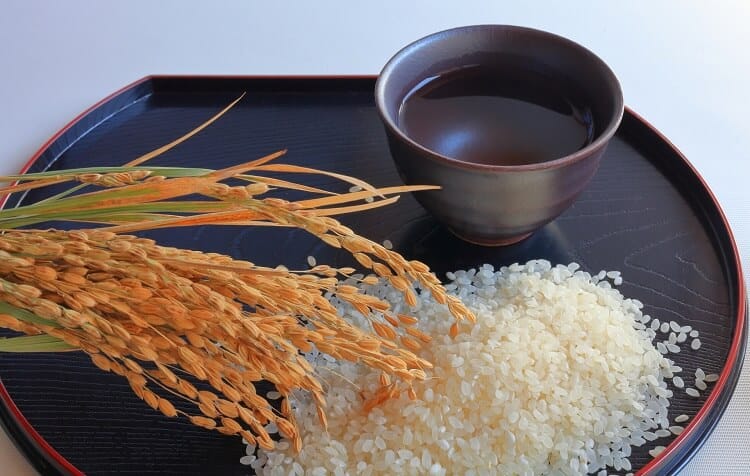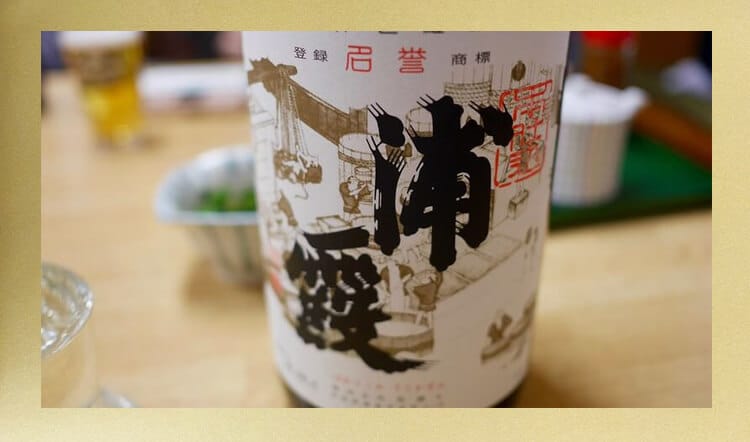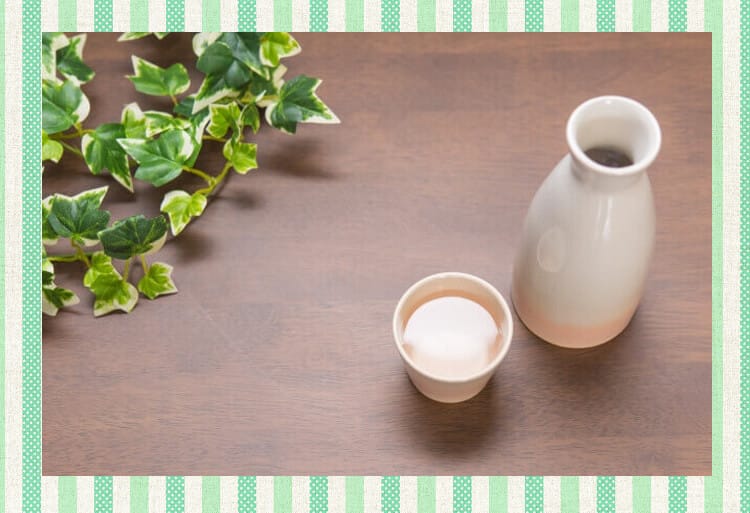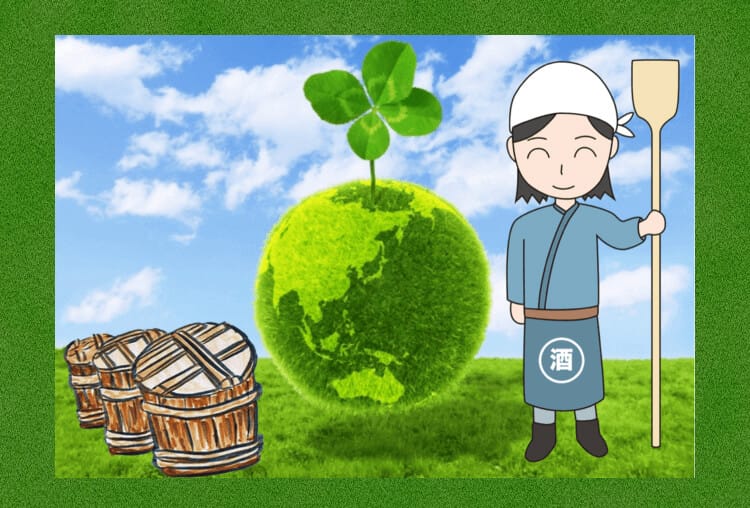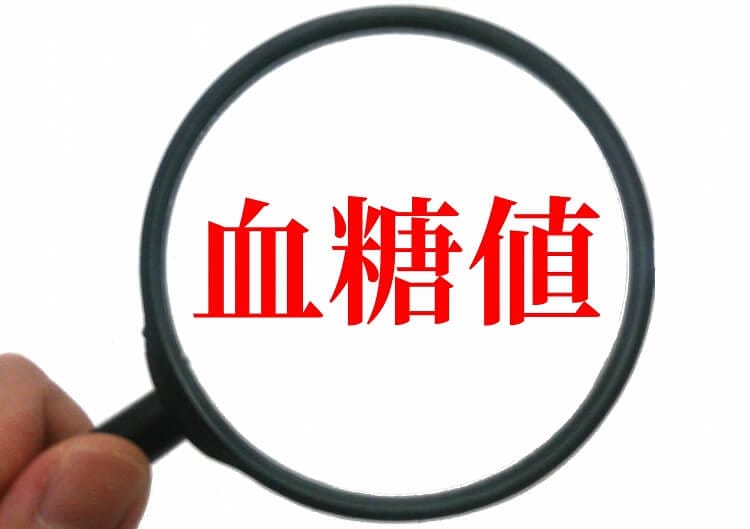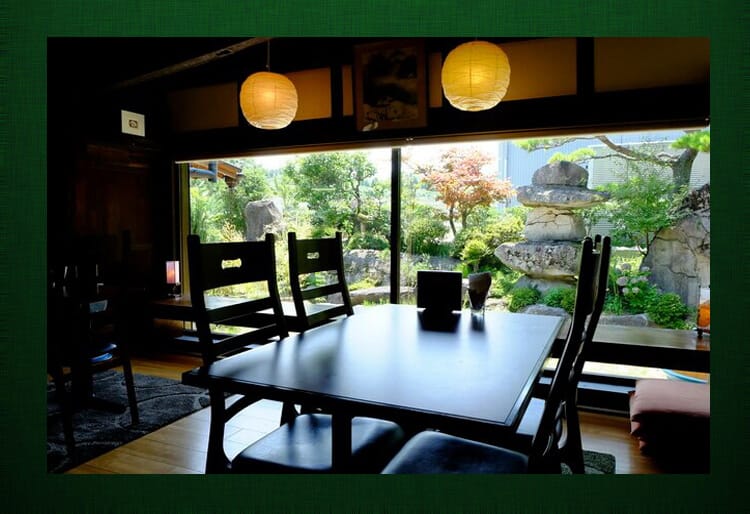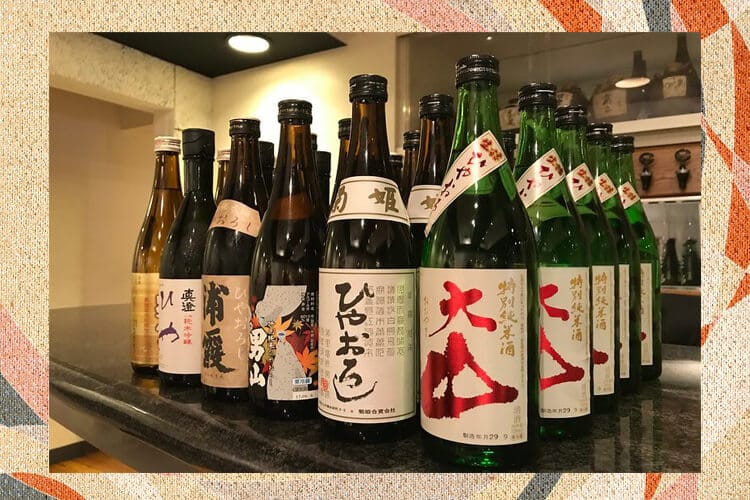
Did you know that there are ways to enjoy sake depending on the season?
If you look at the naming of sake, those who are not familiar with sake, such as “freshly squeezed” or “xxx hiyoroshi”, have something that does not know what it is.
Many of these namings indicate the stage of sake, so that the ingredients are in season, and this is a guideline for how to drink during this season.
One of them is the sake called “Hiyaoroshi” where you can feel the unique taste from the 9 month to the 11 month of “From the beginning of autumn to the arrival of winter”.
What kind of sake is Hiyoroshi here?
Here are some tips for enjoying hiyora.
What is Hiya-Goshi

Hiya-oroshi is a type of sake that is squeezed in the spring from the winter to early spring and then stored in a brewery before the fall.
Sometimes it is expressed as “Hiya-Goshi”, and sometimes it is expressed as “autumn up”.
These expressions can be called in various ways depending on the region and food culture, but whatever they call, the sake that has been stored until the beginning of autumn is sold out. It is classified.
Hiya-oroshi refers to Japanese sake that is sold at the stage of making sake without second firing.
Normally, when squeezed alcohol prepared in winter is stored after spring, it is generally stored after burning.
A hiyori that is shipped when the temperature of the outside is about the same as the temperature of the storehouse after summer.
This hirayoshi is said to have been born in the Edo period. “Wholesale” sake into the market in the “hiya” state, which means normal temperature.
For this reason, the sake that is shipped to Akiguchi is called “Hiya-Goshi”.
Differences in sake depending on the season
As introduced at the beginning, sake has a season called seasonal as well as ingredients, and each has its own characteristics in spring, summer, autumn and winter.
Freshly squeezed
The first is “freshly squeezed” that is shipped from 12 month to late 2 month and mid-3 month.
Sake breweries that practice traditional sake brewing use a method called “Kanzukuri”, which uses traditional manufacturing methods to prepare sake during the coldest winter season.
Freshly brewed with fresh rice harvested in the fall, the freshly squeezed rumors are squeezed into bottles.
This is the sake called freshly squeezed.
It is characterized by a youthful and still sour taste of the yeast. In most cases, it is common to bottle without igniting fresh sake.
Spring sake
The sake that is shipped from the middle of 3 to the middle of 5 is called spring liquor or spring kasumi liquor.
The season changes from winter to spring, the difference in temperature between day and night, and the moisture in the air becomes fog and haze, and the season word that blurs the sky and scenery is blurred.
Kasumi is a characteristic of Japanese sake that feels light and ugly.
Spring liquor is often expressed as new sake, or it is often specified as the most squeezed, fresh sake, no filtration, etc., and there are no clear conditions.
The sake is characterized by a smooth and supple taste, with a dry finish, but with a subtle sweetness.
Summer sake
Speaking of drinks that blow away the heat of summer, many people will answer beer, but if you drink it in a kinkin state that doesn't lose to such beer, delicious sake is a genre called summer sake.
The sake that is shipped from mid-5 to the end of the 8 month is called summer sake, and there is no clear definition.
However, sake inevitably tends to flow to other liquors such as beer, and sake that has an image of drinking at room temperature or boil tends to be avoided in summer.
However, each brewery is steadily producing summer sake with a lot of ingenuity and ingenuity.
Sake with a blue label or a design reminiscent of summer would be fine as summer sake.
For example, the alcohol content is lower than normal sake so that it can be cooled and squeezed, or in order to feel refreshing, you can add Schwashwa carbonate to make it sparkling sake, sell it as raw sake with raw sake, and lock it Or recommend drinking.
In this way, summer sake can be said to be a genre of Japanese sake that can be viewed in various ways by each brewer.
Difference in sake depending on the number of times of burning
In addition to the difference in shipping time, the type of sake varies depending on the number of times it is fired.
For general sake, it is common to perform a process called burning for the purpose of preventing corruption. Usually it is shipped after 2 times of fire.
However, “Hiya-Goshi” is generally fired only once so that its quality does not drop during storage after being squeezed, and is not fired before shipping.
“Nama Sake” refers to sake that has been squeezed without any burning.
Next, sake called raw storage is a type of sake that is stored in a bottle without igniting it, and is then ignited before being shipped.
Next is a sake called uncooked sake, which is baked once before being prepared and bottled. After that, the bottles are stored in bottles, and when it is time to ship, the ones that are shipped without burning are called raw stuffed sake.
And as you can see in general sake, fire before bottling, store it in a jar, store it, and let it sleep.
After that, when it is time to ship, it will be fired again and shipped.
Looking at the label of sake, there are many things that are labeled in various ways, such as “freshly squeezed original sake”, and if you don't have knowledge of sake, you may not know what it is.
However, these names clearly indicate the difference in shipping time and storage period, and how the manufacturing process called burning is performed.
Each one has its own personality, so let's find out how sake made is your favorite.
The feature of Hiya-Goshi is
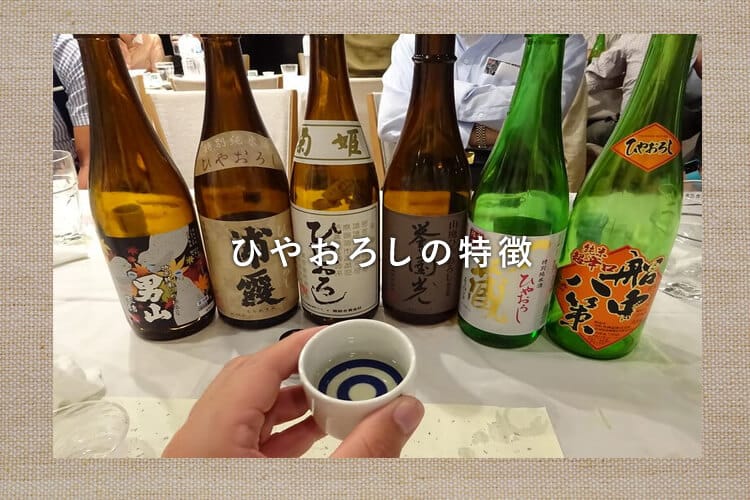
The biggest feature of Hiyaguroshi is that it is sake that has been stored for a long time after being lit.
The freshly squeezed and fresh sake made from fresh rice harvested in the fall and prepared in the winter of that year are fresh and youthful.
On the other hand, Hiyaoroshi prepares fresh rice harvested in autumn and stores it in a fired state.
You will have nearly a year to drink. Depending on the time, aging is often progressing well, so you can get a taste of mellowness when you squeeze it.
If the freshly-squeezed “newcomer” is used, Hiyoroshi may look like a veteran of hundred battles.
It can be said that it is a feature of hiyori to be able to taste depth and richness with a well-balanced taste.
Tips for enjoying hiyora
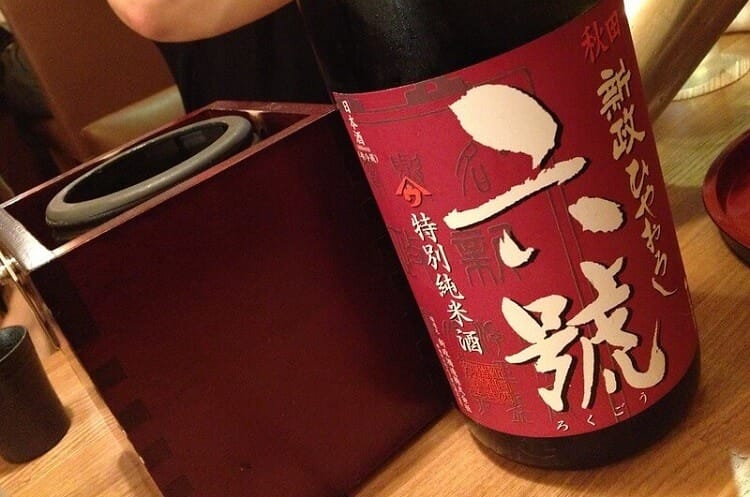
After Hirayoshi put on fire, he was laid down in a storage room, and found that it was a sake that had spent a summer and had a lot of ripeness.
In order to enjoy hiyora with these characteristics, you need to know a few tricks.
It is generally between 9 and 11 months each year that the hiyashi is lifted and the market is lively.
Although it is stored in the state of `` Hiya '' during the summer and does not dare to fire the second time, it is a hilari, but it changes enough to taste from 9 month to 11 month It is natural to see
The Hiyamari shipped in the month of 9 is the goodness of unripened liquor, and the roughness and bitterness that are weak points are slowly removed by spending the summer, so it is a dark blue that has been matured Rather than taste, it is relatively easy to drink and has a mild taste.
The “Hiya-Goshi” shipped in the month of 9 is called “Nagoshizake”, although there is no indication on the label.
Since it is the 9 month where the remaining heat still remains, we recommend that you enjoy it as sizzle or cold sake.
On the other hand, even those that are shipped to 11 month, which has been laid down to the last minute, are matured during 3 months, and the taste is increased and the darker taste is strongly felt.
In this way, even if you say the same thing, you can feel a great difference in taste between the 9 month and the 11 month.
This 11 lunar month is called “late autumn sake”, and as the maturity progresses, the depth and taste are expressed as deeply as possible.
Of course, the best autumn grated sake, such as saury and matsutake, as well as winter ingredients such as hot pot sauce based on soy sauce and miso.
It is recommended that you enjoy boiling sake.
And the name also exists on the hirayoshi shipped in 9 month, which is exactly between 11 month and 10 month.
This is called "Autumn Ichiban Sake". The sake that is sold in 10, which is said to be the most comfortable and comfortable climate of the year, has been aged in comparison with summer sake.
However, the fact that the aging has progressed and the richness and aroma are rich does not mean that it is particularly rich, but it is a sake that is well-balanced with all elements such as flavor, throat, aroma and taste There are many.
Because the balance is excellent, the best way to enjoy is to change the way you drink depending on the situation.
For example, if the day feels a little hot even in the 10 month, enjoy it cold. On the other hand, if it rains in the autumn and the chills are on a sun, the best way to start drinking is to have a wide range of ways to drink.
It's also fun to taste the luxury of autumn season, and to see the difference as the moon changes.
Hiya-oroshi recommends "Omochi"
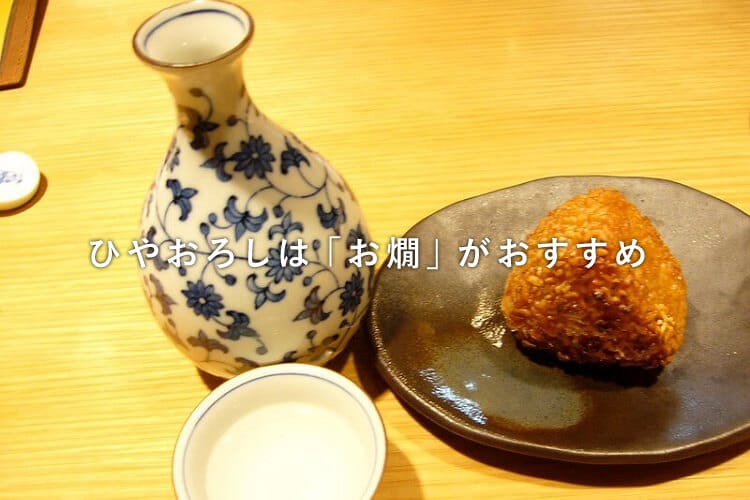
Some people think that it is best to drink in the state of the chicks because they are wholesaled with chicks.
By being laid down for a summer, the taste becomes smoother and more complex, and the umami taste is enhanced.
Rather than having cold sake, it is recommended because it can enhance the flavor and aroma when it is cooked.
In particular, it is said that the best way to taste it is to drink it in the state of a warm koji, which is said to have the most fragrance.
As for temperature, the temperature will be about 40 degrees, so if you want to enjoy it more deliciously, you should remember it.
Recommended hiyashi oroshi

There are more than 1500 sake breweries nationwide, and most breweries produce "Hiya-oroshi".
If you have a favorite brand, we recommend you to drink the brand's grated grated ginger, but if you have no particular brand, we will introduce a typical grated grated ginger, so please try it.
Urayasu Hiyaoroshi Special Pure Rice
Uragasumi is a brand sent out by Saura Co., Ltd., which has a brewery in Miyagi Prefecture, also known as a place for sake.
It is known for using Sasanishiki and Hitomebore as raw materials, but it is also famous for its deliciousness.
Urayasu Hiyaoroshi Special Pure Rice is a summer summer sake sold in September. The specially ripened rice, which has been ripened moderately, has a taste of rice and is finished in one that you can feel the unique taste of Sasanishiki.
Snow stable Hiyaoroshi Junmai Ginjo
This is also the “Hiyaoroshi” brewed by the Kuramoto Coffee Brewery in Yurihonjo City, Akita Prefecture, which is known as the source of rice and sake.
The feature of the brand of Snow Stable is not sake brewing that adds various things to the material and enhances it, but conversely it eliminates wasteful things and subtracts to express the original taste of sake It will be sake that makes sake.
In addition to Junmai Ginjo, “Hiyaoroshi Hidden Mountain Abandoned Junmai Ginjo”, which is a pure rice ginjo but also abandoned, is one of the supreme ones.
Shangzuru Crane Junmai Ginjo Koshirei
Junmai Ginjo Koshirei is a sashimi crane made by Miyao Shuzo in Niigata Prefecture, which is said to be a brewing rice paradise.
Although the name “Hiya-oroshi” is not attached, it will be the first sake in the fall because it is a limited sale product sold in 10 month.
Tanrei sweet sake is a famous Japanese sake that is said to be a harpoon crane, and you can feel the crisp taste while keeping the best features of autumn in a balanced manner.
Enjoy Hiya-Goshi that can only be enjoyed in the fall
How was it.
If you've seen the label “Hiyaoroshi”, you may have solved the problem of not knowing what kind of sake it is.
Why don't you enjoy the aged autumn pleasure "Hiya-oroshi" together with the taste of autumn and winter?


